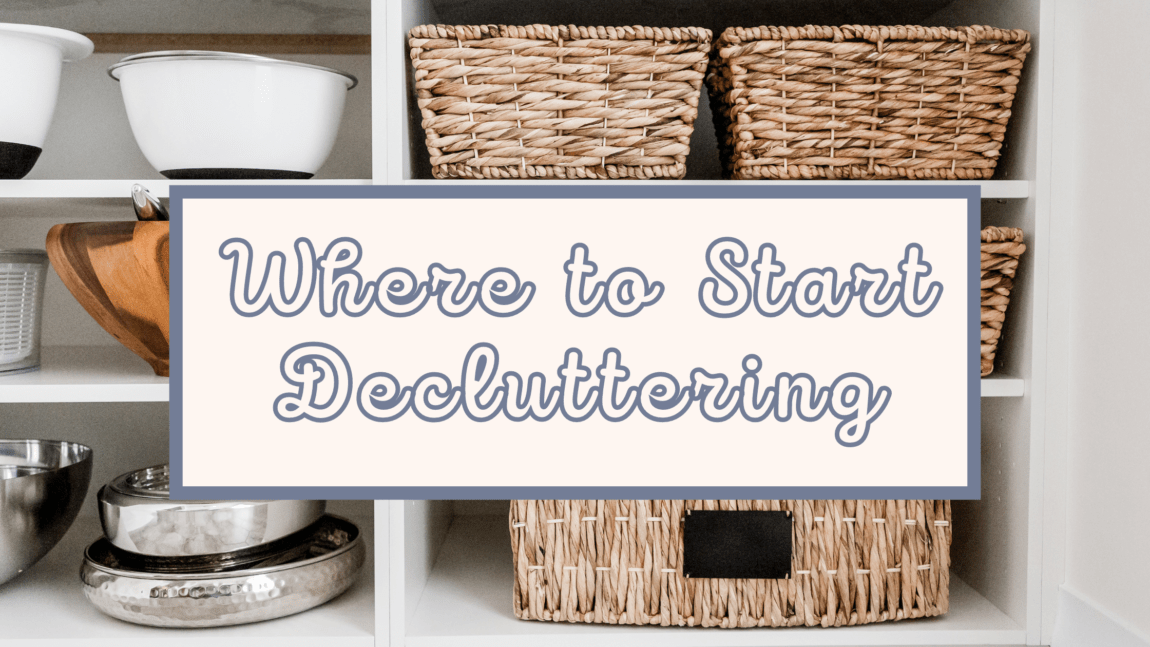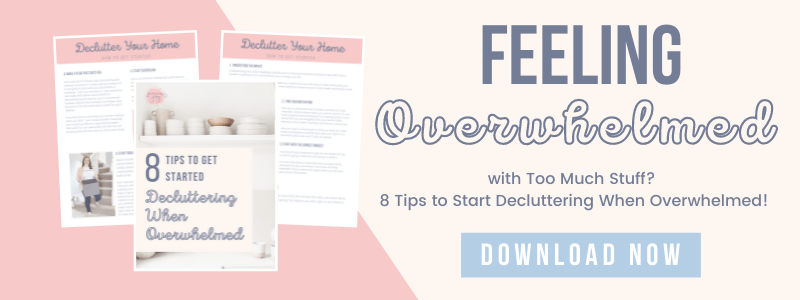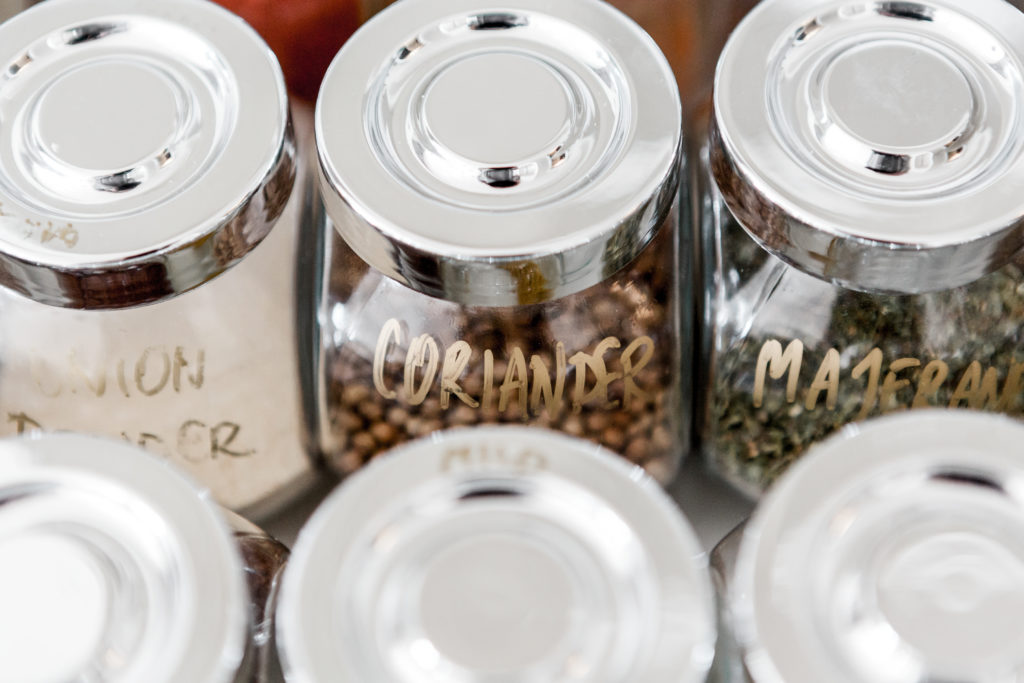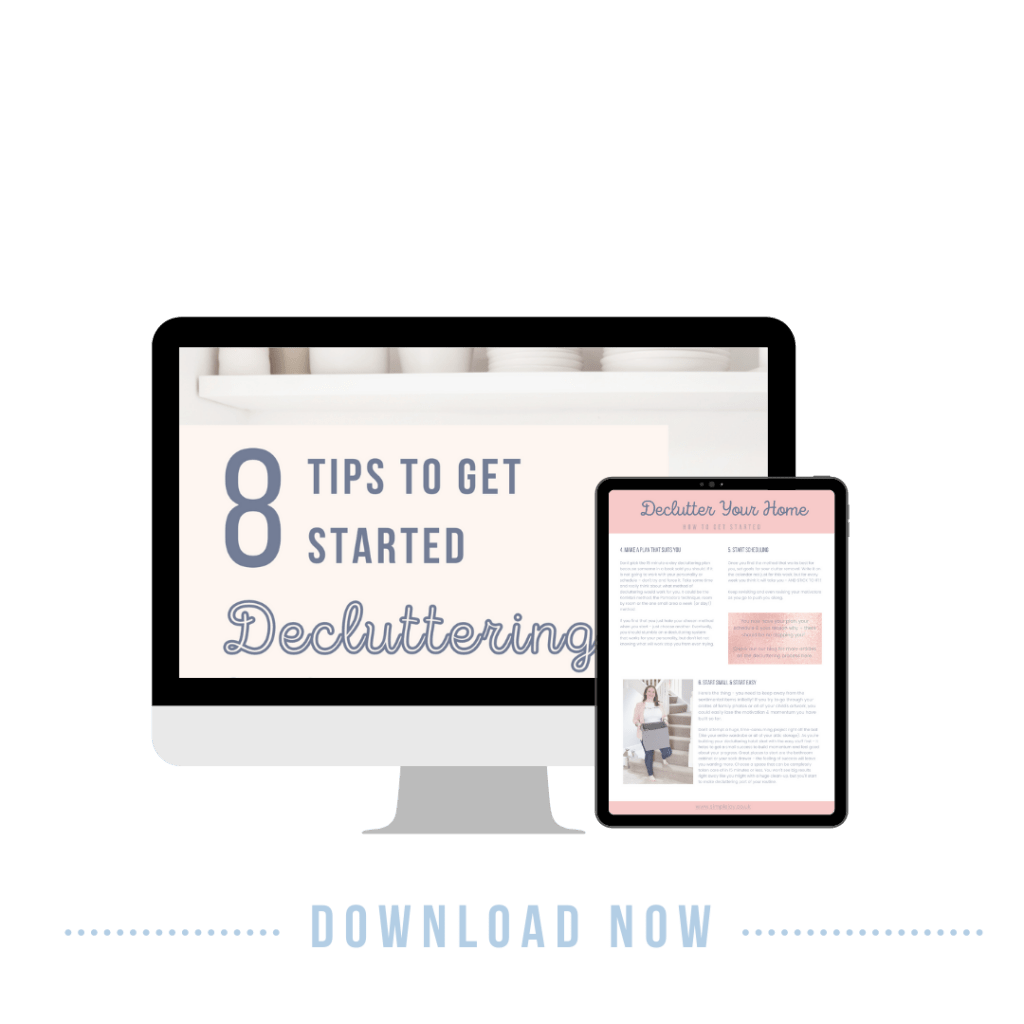Where to Start Decluttering

Starting to declutter can feel particularly overwhelming and challenging. That is because it’s not just about physical clutter, but emotional baggage as well, making it feel daunting and emotionally charged.
Each item you need to declutter could carry a memory, a hope, or a regret, which often stirs up emotions and makes the decision process more complex.
When you’re already feeling overwhelmed because of the level of clutter in your home, adding the task of making tough decisions about what to keep and what to discard can feel like a mountain that’s too steep to climb.
On top of that, the sheer volume of items to sort through can lead to decision fatigue, making it difficult to know where to even begin. All these factors can make starting the decluttering process feel particularly challenging.
Today I am going to share with you some tips on how to start decluttering and I hope you’ll discover strategies that resonate with you.
Take Baby Steps
If the idea of decluttering feels overwhelming, opt for incremental progress. Start with a small corner, one box at a time. Divide the process into manageable sessions – this method helps you prevent burnout and ensures you make steady progress.
My tip for you: set a timer and tell yourself you can do it within the time limit. 10 to 15 minutes will do.
Start WITH THE EASY SPOTS
Begin decluttering in a location where you’re least likely to face emotional hurdles. Things you know for sure you don’t want or need anymore are great places to start.
Whether it’s clothing that doesn’t fit, old magazines, or outdated electronics, starting with these ‘low-hanging fruit’ makes the process feel less overwhelming and gives you a quick win.
As with any skill, decision-making and decluttering get easier with practice.
Yes, it might be challenging initially, but over time, the process will feel less intimidating. The more you practice getting rid of things, the less frightening they will become.
Starting somewhere where the decisions are easier will increase your confidence to keep going!

TACKLE THE STRESS HOTSPOTS
Choose to declutter a space that’s bothering you every day. It could be a disorganised drawer that you use frequently, or a closet that’s overflowing with stuff.
Although decluttering these areas might demand more time and energy, clearing them first can be incredibly therapeutic and can create a noticeable difference in your day to day life – which in turn can be a big motivator to keep going!
START IN HIGH IMPACT ZONES
Opt for areas that are frequently used or essential for your family’s day-to-day activities. These might be your kitchen, bathroom, or foyer.
By simplifying these spaces, you’ll enhance their functionality and overall efficiency – and same as above, it can be a big motivator for you moving forward!
TRY A 30 DAY DECLUTTERING CHALLENGE
Here’s a method I find useful – take a bag or a box (or even a laundry basket – you can fit so much in those!) and dedicate a few minutes each day for 30 days to find items you no longer use, can donate, or wish to discard; 10 minutes should suffice.
It’s a fast, effective way to make noticeable changes in a short period and is a great way to get rid of all that visible clutter in particular.
REMOVE LARGE ITEMS FIRST
This strategy offers immediate, visible results. Consider parting ways with large, bulky items like unused furniture or toys. Donate them to charity or sell them.
Freeing up physical space in your home will bring an incredible sense of accomplishment.

Start with what you see
Begin decluttering by focusing on what you can see on the surfaces around you. This method helps to make the initial decluttering process less intimidating, as it doesn’t involve diving into the depths of cupboards or drawers straight away.
Start with things like the kitchen counter, your desk, the coffee table, etc. Removing visible clutter will make a noticeable difference in your space and will motivate you to continue.
Start with duplicates
Another decluttering strategy that can feel less overwhelming is to start by removing duplicates. How many pairs of scissors, spatulas, or screwdrivers do you really need?
Once you identify an item of which you have multiple copies, choose the best one or two to keep and let the rest go.
Decluttering duplicates simplifies the process by reducing the number of decisions you have to make.
Start with what’s broken or worn out
Broken items or things you’ve been meaning to fix for ages can be an easier place to start decluttering. If an item is broken and it’s been that way for a while, it’s a clear sign you can live without it.
Similarly, items that are worn out, like old towels or sheets, can be replaced with better quality items that will make your home more pleasant.
Start with what’s expired
Another easy place to start decluttering is by discarding items that have expired. From canned goods/herbs and spices in your pantry to makeup in your bathroom, many items have a shelf life.
By decluttering items past their prime, you clear out space and avoid the potential health risks of using expired products.

Start with a plan
If you’re feeling particularly overwhelmed, it might be helpful to create a plan before you start decluttering.
This could be as simple as making a list of the areas in your house you want to declutter, or as detailed as creating a schedule for when you’ll tackle each area.
Having a plan can help you feel more organised and in control, which can alleviate feelings of overwhelm.
JUST MAKE A START
When all else fails and you’re feeling stuck, the best strategy is to start somewhere, anywhere.
Avoid over-planning or overthinking.
If you don’t like deadlines or making plans, just jump in and do it.
Choose something, anything, that you can declutter right now.
The hardest part is often getting the ball rolling!
Fortunately, there are numerous strategies to make the process of starting to declutter easier, even if you’re feeling overwhelmed.
Have you tried any of these methods, or do you have personal strategies that work better? I’d love to hear about your experiences.
With these techniques, you can gradually build your decluttering skills and confidence, making the task less intimidating and more approachable, regardless of the initial feelings of overwhelm.
Remember, decluttering is a journey, not a destination. So take it one step at a time, and soon, you’ll relish the tranquillity of a clutter-free living space.
Not sure how to get started decluttering?
Get your free 8 Tips to Get Started Decluttering When Overwhelmed PDF!
I am going to help you move forward knowing how to get the motivation to get started on your decluttering journey and most importantly keep going. Follow these tips and watch your home become clutter free!
